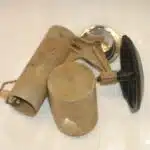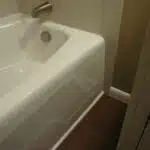Replacing a bathtub faucet is an essential task for every homeowner, and it provides a new look to the bathroom. A faulty faucet can lead to water leakage, which can cause damage to the walls and floors. Therefore, it is imperative to replace the faucet as soon as possible to avoid any significant damage.
As a plumbing repair expert, I have seen many homeowners struggle with replacing their bathtub faucets. It may seem like an intimidating task, but with some guidance and patience, it can be easily done. In this article, we will discuss step-by-step instructions on how to replace a bathtub faucet. By following these instructions carefully, you’ll be able to complete the job without any complications and feel confident in your ability to serve others in your household or community who may need this repair service.
Identify The Type Of Faucet
Faucets are an essential component of any bathroom, and over time, they will inevitably wear out or become outdated. Before replacing your bathtub faucet, it is important to identify the type of faucet you have. Identifying faucet types is crucial because each type has unique components that require different replacement procedures.
There are four main types of bathtub faucets: compression, cartridge, ceramic disk, and ball-type faucets. Understanding faucet components is the key to identifying which type of faucet you have. Each type has a handle that controls the water flow and temperature. Compression faucets have two handles; one for hot water and one for cold water. Cartridge faucets use a movable stem cartridge to control water flow while ceramic disk faucets use two ceramic disks to regulate water flow. Ball-type faucets have a single handle that moves in all directions.
Knowing your bathtub faucet type will allow you to gather necessary tools and materials before starting the replacement process. Before proceeding with the replacement, turn off the water supply valve connected to the tub. Additionally, cover the tub drain with a cloth or towel to prevent small parts from falling down the drain during removal. Now that you’ve identified your bathtub faucet type let’s move on to gathering necessary tools and materials for replacing your old or outdated faucet successfully!
Gather Necessary Tools And Materials
Now that you have identified the type of faucet, it is time to gather the necessary tools and materials for replacing your bathtub faucet. Choosing materials can be overwhelming with so many options available in the market. It is essential to consider budget considerations while selecting materials for your faucet replacement project.
One option is to hire a professional plumber who can take care of everything, from choosing the right materials to installing them correctly. However, this may come at a higher cost compared to doing it yourself (DIY). If you choose DIY, keep in mind that replacing a bathtub faucet can be challenging if you are not familiar with plumbing. But with some basic knowledge and proper tools, you can save money by doing it yourself.
When gathering tools and materials for your faucet replacement project, make sure to turn off the water supply before you start any work. This is an essential step as water supply valves should always be closed before beginning any plumbing work. Once the water is turned off, you can begin removing the old faucet and installing the new one using your chosen materials. With careful planning and attention to detail, replacing your bathtub faucet can be a rewarding DIY project that results in increased satisfaction every time you use your new fixture.
Turn Off The Water Supply
- In order to replace a bathtub faucet, the first step is to locate the shut off valve for the water supply.
- This can usually be found underneath the sink or behind the toilet, depending on the room layout.
- Once located, the water supply can be turned off by turning the valve clockwise.
- It is important to ensure that all fixtures in the room are drained of water.
- This can be done by turning on all the taps and flushing the toilet.
- The room should then be prepared by clearing the area around the bathtub faucet and laying down a cloth to protect the floor.
Locating Shut Off Valve
Locating the shut off valve is a crucial first step when replacing a bathtub faucet. The shut off valve controls the water supply and must be turned off to prevent water from flowing during the replacement process. Knowing how to locate the shut off valve can save you time and frustration.
To locate the shut off valve, start by checking under the sink or behind the bathtub. Look for a small lever or knob that controls the flow of water. In some cases, the shut off valve may be located in another area of your home, such as in the basement or crawl space. A little bit of detective work may be necessary to find it.
Once you have located the shut off valve, turn it clockwise until it is fully closed. This will stop any water flow to your bathtub faucet during replacement. It’s also a good idea to turn on the faucet after shutting off the water supply to make sure that there is no more water coming out before beginning work. Following these tips for shutting off water supply during faucet replacement will ensure a smooth and successful process without any unwanted leaks or spills.
In summary, locating and turning off the shut off valve is an essential step in replacing a bathtub faucet. Take your time to search for it and ensure that it is fully closed before starting any work. These tips will help you avoid any potential messes or problems while working on your plumbing project.
Turning Off Water
When it comes to replacing a bathtub faucet, one of the most important steps is properly shutting off the water supply. This is crucial in preventing any potential water damage or leaks during the replacement process. Knowing how to turn off the water supply correctly can save you time, money, and frustration.
To properly shut off the water supply, start by locating the shut off valve. This valve controls the flow of water to your bathtub faucet and must be fully closed before beginning any work. Check under the sink or behind the bathtub for a small lever or knob that controls the shut off valve. If you cannot find it in these areas, it may be located in another part of your home such as a basement or crawl space.
Once you have located the shut off valve, turn it clockwise until it is fully closed. It’s also a good idea to turn on the faucet after shutting off the water supply to make sure that there is no more water coming out before beginning work. By following these tips for preventing water damage during faucet replacement, you can ensure that your plumbing project goes smoothly without any unwanted leaks or spills.
Preparing The Room
When it comes to replacing a bathtub faucet, there are several steps you need to take to ensure success. One of the most important steps is shutting off the water supply, which we have discussed in detail in a previous subtopic. In this subtopic, we will discuss how to prepare the room for the replacement process. Before you can start working on your faucet, you need to make sure that the area around it is clean and clear.
The first thing you should do when preparing the room is measure the space where your new faucet will go. This will help you choose a faucet that fits perfectly and doesn’t stick out or look awkward. You should also consider the decor of your bathroom when choosing a new faucet. Make sure it matches or complements your existing fixtures and design scheme.
Once you have chosen your new faucet and measured the space, it’s time to prepare the room for replacement. Start by clearing out any objects or clutter near the bathtub that could get in your way during installation. Lay down towels or drop cloths on the floor to catch any dropped pieces or excess water. By taking these simple steps, you can create a clean and organized workspace that will make replacing your bathtub faucet much easier and stress-free.
Remove The Old Faucet
Removing the old faucet is an essential part of replacing a bathtub faucet. Here are some tips and tricks on how to remove it properly. Firstly, turn off the water supply for the bathtub by closing the valves located under the sink or behind the wall panel. This will prevent any water from flowing while you work on removing the faucet.
Next, use a wrench or pliers to loosen and remove any nuts or bolts that are holding the faucet in place. It’s important to be careful and not damage any surrounding tiles or fixtures while doing this step. If there is any corrosion or buildup around the nuts, use a penetrating oil such as WD-40 to make it easier to loosen them.
One common mistake people make when removing a bathtub faucet is forgetting to detach it from the pipes underneath. Be sure to disconnect any pipes connected to the faucet before attempting to remove it completely. Another mistake is not labeling which part goes where, making reinstallation more difficult than necessary. Take clear photos of each step and label each part so that you can easily refer back later when reinstalling.
- Use a bucket underneath the pipes when disconnecting them to catch any residual water.
- Cover surrounding areas with towels or plastic sheeting to protect against accidental damage.
- If you’re having difficulty removing stubborn nuts or bolts, try using a basin wrench for better leverage.
Now that you have removed your old bathtub faucet successfully, it’s time for the next step: cleaning up! But before we move onto that section, let’s recap what we just learned about how to remove a bathtub faucet properly. By turning off the water supply, using proper tools and techniques, being mindful of potential mistakes, and taking photos for reference later on, you’ll be well on your way to completing this project successfully without damaging any parts or fixtures in your bathroom.
Clean The Area Around The Faucet
Before installing a new bathtub faucet, it is essential to clean the area around the existing one. This step is crucial as it ensures that no dirt or grime gets into the newly installed faucet, which can cause damage and blockages in the future. Preparing the surface also helps in assessing whether there are any underlying issues that may affect the installation process.
To start cleaning, ensure that you have all the necessary tools such as a scrub brush, cleaning solution, and a rag. Begin by removing any visible debris with your hands or a dry towel. Once done, apply an appropriate cleaning solution to the area and let it sit for a few minutes. Using a scrub brush, gently scrub off any stubborn grime until the surface is clean.
For stubborn grime that doesn’t come off easily with scrubbing, use a mixture of baking soda and water. Apply this paste to the affected areas using a toothbrush or soft-bristled brush and let it sit for 15 minutes before rinsing with water. It’s important to note that harsh chemicals should be avoided as they can corrode metal surfaces and cause irreversible damage.
Now that you’ve cleaned the area around your bathtub faucet thoroughly, you’re ready to proceed to install the new faucet base. Ensure that you have all the necessary components before starting this process. In case you encounter any problems during installation, consult an expert plumber for assistance.
Install The New Faucet Base
- Prior to replacing a bathtub faucet, it is important to prepare the surrounding area by turning off the water supply, removing any existing fixtures, and covering the drain with a plug.
- The base plate of the faucet should then be attached to the wall with a secure mount to ensure the faucet is firmly in place.
- Before attaching the new faucet, the old pipe should be measured to ensure the correct length of pipe is used and allow for any necessary adjustments.
- Once the measurements are taken and the area is prepped, the faucet should be securely attached to the wall with the base plate, ensuring proper alignment of the pipe and the faucet.
Prepare The Area
Replacing a bathtub faucet can be a DIY task that saves you money and gives your bathroom a fresh new look. However, it requires some preparation to minimize the risk of water damage during the process. Before installing the new faucet base, the first step is to turn off the water supply to the bathtub. This is usually accomplished by turning off the shut-off valve that controls the water flow to the bathroom. It’s important to locate this valve before starting any work on your faucet.
Next, you need to remove the old faucet base from your bathtub. Start by removing any screws or bolts holding it in place. Then, use a wrench or pliers to loosen and remove any nuts or fittings securing the faucet base. To prevent water from leaking into your bathroom while removing the old faucet, place a bucket underneath it to catch any residual water.
Once you have removed the old faucet base, it’s time to clean up and prepare for installation of the new one. Use a scrub brush and cleaner to remove any residue or debris from around where your previous faucet was located. Check for signs of mold or mildew around your tub as well, especially if there has been any moisture buildup due to leaks in your old faucet. With these tips and proper preparation, you can minimize water damage during bathtub faucet replacement and install your new fixture with ease.
Attach The Base Plate
Now that you have removed the old faucet base and cleaned up the area around it, it’s time to move on to the next step of installing the new faucet. The first thing you need to do is attach the base plate. This plate will provide a solid foundation for your new fixture and prevent any leaks from occurring.
One common mistake people make when attaching the base plate is failing to properly align it with the holes in the bathtub. Make sure you position it correctly and secure it firmly in place with screws or bolts. Another alternative method is using a silicone adhesive instead of screws or bolts for added stability.
Once you have attached the base plate, you can then proceed to install the rest of your new faucet components. Follow the manufacturer’s instructions carefully and take your time to ensure everything is connected securely. With careful attention to detail and patience, you can successfully install your new bathtub faucet without any water damage or other issues.
Attach The New Handles And Spout
As we move on to the next step, it’s time to attach the new handles and spout. This is where we can really see the transformation taking shape. It’s like adding jewelry to a beautiful dress, completing the look and making it shine. But before we get started, let’s talk about matching styles. If you’re replacing your faucet, you’ll want to make sure that your new handles and spout match the existing fixtures in your bathroom. This will create a cohesive look that ties everything together.
Once you’ve selected your new handles and spout, it’s time to adjust the water flow. You can do this by adjusting the valves underneath the sink. Turn them clockwise to decrease water flow or counterclockwise to increase it. Once you’ve got everything adjusted just right, it’s time to install your new handles and spout. Make sure you follow the manufacturer’s instructions carefully, as each faucet may be slightly different.
Possible discussion ideas for ‘attach the new handles and spout’: How do you know if your new handles and spout are a good match for your existing fixtures? What are some tips for adjusting water flow? As always, remember to take your time during this step to ensure that everything is installed properly. When done correctly, attaching the new handles and spout can make a big difference in both appearance and functionality of your bathtub faucet. Next up, we’ll tighten those connections so that everything is secure and functioning properly.
Tighten The Connections
Once you have successfully installed a new bathtub faucet, the next step is to tighten all the connections. This is an essential part of the process as loose connections can lead to leaks and water damage. To tighten the connections, use a wrench to securely fasten each nut and bolt. Be sure not to over-tighten, as this can cause damage to the fixture.
Adjusting pressure is another important consideration when replacing a bathtub faucet. The water pressure should be tested before and after installation to ensure it is at an appropriate level. If the pressure is too high or too low, adjustments may need to be made through the main water supply valve or by installing pressure regulators on individual fixtures.
Choosing new fixtures can also be an opportunity to update your bathroom’s overall style and functionality. Consider factors such as material, finish, and design when selecting new fixtures. Additionally, make sure that all new fixtures are compatible with your plumbing system before making any purchases.
Moving forward, it’s time to reconnect the water supply. This will require turning on the main water valve and testing each fixture for any leaks or malfunctions. With proper installation techniques and attention to detail during tightening connections, adjusting pressure, and selecting new fixtures; your newly installed bathtub faucet should provide years of reliable service without any issues.
Reconnect The Water Supply
- Shut off the water supply by turning off the valves located behind the existing faucet.
- Remove the existing faucet and clean the area to ensure a secure fit for the new faucet.
- Install the new faucet according to the manufacturer’s instructions.
- Apply plumber’s putty to the base of the faucet and secure it in place with the mounting nuts.
- Connect the water supply lines to the new faucet, making sure that the cold and hot lines are connected in the proper order.
- Turn on the water supply valves to check for any leaks, then tighten the connections as necessary.
Turn Off The Water Supply
To properly replace a bathtub faucet, the first step is to turn off the water supply. This is crucial to avoid any potential water damage or leaks during the replacement process. To do this, locate the shut-off valves near the bathtub and turn them clockwise until they are fully closed. If there are no shut-off valves specifically for the bathtub, then you will need to turn off the main water supply valve for your home.
It is important to identify the type of faucet you have before proceeding with replacing it. Different types of faucets require different methods of removal and installation, so be sure to do your research or consult a professional if you are unsure. Some common types of bathtub faucets include compression, cartridge, and ball faucets. Once you have identified the type of faucet, make note of any unique features or components that may require special attention during replacement.
In addition to turning off the water supply and identifying the type of faucet, there are a few tips that can make replacing a bathtub faucet easier and more efficient. For example, take photos or videos throughout the process to help you remember how everything is connected when it comes time for reinstallation. Additionally, use caution when removing old components as they may be corroded or difficult to loosen. By following these tips and taking proper precautions, replacing a bathtub faucet can be a simple DIY project with professional-looking results.
Install The New Faucet
Now that the old faucet has been removed and the water supply has been turned off, it’s time to install the new faucet. Before doing so, ensure that all necessary components are included in the replacement kit and that they match the type of faucet being installed. It’s also a good idea to check for any leaks or damage to the plumbing pipes before proceeding with installation.
To begin installation, follow the manufacturer’s instructions carefully and make sure all components are properly aligned and tightened. Be sure to use thread seal tape to prevent leaks and ensure a secure connection. One potential drawback of DIY faucet installation is that mistakes can be made during this process, such as improper alignment or overtightening, which can lead to leaks or damage. If you’re unsure of your skills or experience with plumbing repairs, it may be best to hire a professional plumber for this task.
Once the new faucet is securely installed, turn on the water supply valves and test for any leaks or issues. If everything looks good, reattach any decorative pieces or covers as necessary. Overall, installing a new bathtub faucet can be a rewarding DIY project with many benefits such as cost savings and increased confidence in your own abilities; however, it may not be suitable for everyone depending on their skill level and comfort with plumbing repairs.
Reconnect The Water Supply
The next step in installing a new bathtub faucet is to reconnect the water supply. It is important to carefully follow the manufacturer’s instructions and ensure that all components are properly aligned and tightened. Before turning on the water supply, it is also essential to check for any leaks or issues that may arise.
Common issues that may occur during this process include leaks or improper alignment of components, which can lead to damage or further plumbing problems. To troubleshoot these issues, it may be necessary to disassemble and reassemble certain parts of the faucet or consult with a professional plumber for assistance. Preventive maintenance practices such as regular cleaning and inspection can also help identify and address any potential issues before they become major problems.
When reconnecting the water supply, it is best practice to use thread seal tape to prevent leaks and ensure a secure connection. Once everything is properly aligned and tightened, turn on the water supply valves slowly and test for any leaks or issues before reattaching any decorative pieces or covers. By following these best practices and troubleshooting tips, homeowners can successfully install a new bathtub faucet with confidence in their own abilities.
Turn On The Water And Check For Leaks
Just as a conductor leads an orchestra to produce beautiful music, the water pressure in your bathtub faucet plays a crucial role in ensuring a smooth and relaxing bathing experience. Before finishing up the replacement process, it’s essential to turn on the water and check for any leaks or irregularities.
To check for water pressure, turn on the hot and cold taps and observe if they are flowing evenly. If you notice any discrepancy in pressure, you may need to adjust the water valves under the sink or call a professional plumber. Adjusting faucet temperature is also crucial to ensure that both hot and cold water flow at optimal temperatures. If necessary, refer to the manufacturer’s instructions for adjusting temperature settings.
Once you’ve checked for leaks and adjusted the temperature, it’s time to test the faucet before completing the installation process. As we move forward with testing, keep in mind that safety should always be our top priority when dealing with plumbing fixtures. So let’s move on to testing and make sure your new bathtub faucet is working smoothly without any issues!
Test The Faucet
After installing the new faucet, it is important to test it to ensure that it is properly functioning. Here are a few steps you can follow:
- Turn on the water supply valves underneath the sink by turning them counterclockwise.
- Lift the faucet handle and turn it on, allowing both hot and cold water to run for a few minutes. Check for any leaks or drips from the spout or handles.
- If you notice any leaks or drips, try tightening the connections between the faucet and water supply pipes. If this doesn’t solve the problem, you may need to disassemble and reassemble the faucet to fix any loose components.
Common mistakes when testing a new faucet include not fully opening both hot and cold valves, which can result in low water pressure or uneven temperature control. Troubleshooting tips include checking for any obstructions in the aerator screen or cleaning out mineral buildup from inside the faucet.
Once you have tested your new bathtub faucet and ensured that it is working properly, you can proceed with sealing any gaps or cracks around where the fixture meets the wall or tile surround. This will help prevent water damage and mold growth over time.
Seal Any Gaps Or Cracks
After testing the faucet, it’s time to seal any gaps or cracks that may have been exposed during the installation process. This is an important step in ensuring that your bathtub faucet operates efficiently and doesn’t cause any leaks. One common mistake many people make is not properly sealing the area around the faucet, which can lead to water damage and mold growth.
To prevent this from happening, you’ll want to use a waterproofing solution such as silicone caulking or plumber’s putty. Silicone caulking is a popular choice for sealing around faucets because it’s easy to apply and provides a durable seal. Plumber’s putty is another option, but it should only be used on certain types of surfaces like ceramic or porcelain.
When applying the waterproofing solution, make sure you’re covering all gaps and cracks around the faucet. Start by removing any old caulking or putty with a scraper or knife. Then, clean the area thoroughly with a rag and some rubbing alcohol to remove any dirt or debris that may interfere with adhesion. Once the area is clean, apply your chosen waterproofing solution according to its instructions and allow it to dry completely before using your bathtub again.
Now that you’ve sealed any gaps or cracks around your bathtub faucet, it’s time to clean up the work area. This will ensure that there are no leftover materials or debris that could cause problems down the road. Use a damp cloth to wipe away any excess caulking or putty, and dispose of any waste materials in a safe manner. With your work area cleaned up and secured, you can now enjoy your newly installed bathtub faucet worry-free!
Clean Up The Work Area
- In order to replace a bathtub faucet, one must first gather the necessary supplies, such as a wrench, adjustable pliers, a basin wrench, and a putty knife.
- After gathering the supplies, the existing faucet should be removed and disposed of properly.
- The next step is to clean the work area and ensure it is free of dirt and debris.
- After cleaning the work area, the new faucet should be carefully examined to ensure that all the components are present and in good condition.
- The supply lines should be disconnected from the existing faucet and the new faucet should be prepared for installation.
- Finally, the new faucet should be installed according to the manufacturer’s instructions and the work area should be cleaned up once the installation is complete.
Gather Supplies
Before beginning the replacement of a bathtub faucet, it is essential to gather all necessary supplies to ensure a smooth and efficient process. As a plumbing repair expert, I recommend that you start by turning off the water supply to the bathtub. Next, you should remove any decorative elements or hardware that may be in your way, such as shower curtains or soap dispensers.
Once you have cleared the work area, it’s time to gather your supplies. There are budget-friendly alternatives available if you’re looking to save money on this project. You can find affordable replacement faucets at most home improvement stores or online retailers. Additionally, eco-friendly options are becoming more prevalent in the market, so consider purchasing a low-flow faucet that will help conserve water while still functioning effectively.
In addition to your new faucet, you’ll need basic tools such as pliers and screwdrivers. If you’re replacing an older faucet model, there may also be rust or corrosion present that requires additional tools like penetrating oil or a basin wrench for easy removal. By gathering all necessary supplies beforehand and considering budget-friendly and eco-friendly options, you can efficiently tackle this plumbing repair project with ease.
Dispose Of Old Faucet
After successfully replacing your bathtub faucet, it’s essential to clean up the work area properly. This includes disposing of the old faucet and any other materials that may have been removed during the process. As a plumbing repair expert, I recommend proper disposal of the old faucet to maintain a clean and safe environment.
There are several options for disposing of an old faucet, including recycling programs in your local area. Many hardware stores and home improvement retailers offer recycling services for faucets and other household materials. Recycling is an excellent option for those looking to reduce waste and promote sustainability.
Proper disposal of your old faucet not only keeps your home tidy but also helps protect the environment. Consider recycling or donating your old fixtures instead of throwing them away. By taking these steps, you can make a positive impact on the planet while enjoying your new and functional bathtub faucet.
Clean Work Area
One crucial aspect of any plumbing repair job is the importance of preparation. This includes ensuring that the work area is clean and free from any hazards. As a plumbing repair expert, I cannot emphasize enough how critical it is to clean up the work area after replacing a bathtub faucet. A clean workspace not only ensures that you can work efficiently and effectively but also helps prevent accidents and injuries.
To ensure safety during the cleaning process, it’s essential to take proper safety precautions. This includes wearing protective gear such as gloves and eye protection, especially if you’re handling sharp objects or chemicals. Additionally, be sure to dispose of any hazardous materials properly. This will help prevent harm to both yourself and others who may come into contact with these materials.
Once you have taken all necessary safety precautions, begin cleaning up the work area by removing any debris or leftover materials. Be sure to dispose of everything properly, including old faucets or other fixtures that were removed during the repair process. By taking these steps, you can rest assured that your work area is safe and clean for future use.
Dispose Of The Old Faucet Properly
Proper Faucet Disposal is essential to prevent environmental harm. When you replace an old faucet, it’s crucial to dispose of it properly. Faucets contain materials that can be harmful to the environment if not disposed of appropriately. For example, some faucets may contain lead or other toxic materials that can contaminate water supplies.
There are several ways to properly dispose of your old faucet. The first option is to recycle it. Many cities offer recycling programs for metal items like faucets. You can contact your local recycling center or waste management company to find out how to recycle your old faucet properly. Another option is to donate the faucet if it’s still in good condition. You can donate it to a local charity organization, thrift store, or even sell it online.
The Environmental Impact of Faucet Disposal should not be underestimated. By disposing of your old faucet correctly, you’re contributing positively to the environment by reducing waste and minimizing pollution. Remember, every little bit helps when it comes to preserving our planet for future generations. So take the time and effort to dispose of your old faucet properly, and make a positive impact on the environment.
As you follow these steps for Proper Faucet Disposal, you can now enjoy your new faucet with peace of mind knowing that you’ve done your part in protecting the environment. With a new faucet installed, don’t forget to test its functions thoroughly before putting everything back together again. Testing ensures that everything works correctly and prevents any potential issues from arising in the future. Enjoy your new faucet!
Enjoy Your New Faucet!
After successfully disposing of the old faucet, it’s time to install your new one. But before that, it’s crucial to choose a faucet style that fits your bathroom design and needs. There are various styles available in the market, including wall-mounted, center-set, and widespread faucets.
Wall-mounted faucets are ideal for small bathrooms with limited counter space. They offer a sleek and modern look while freeing up space on your sink or vanity. Center-set faucets feature two handles attached to a single plate and are the most common type of faucet found in households. Widespread faucets have three separate pieces – two handles and a spout – that can be installed at different distances from each other.
Once you’ve chosen a faucet style, it’s essential to take care of its maintenance to ensure its longevity. Regular cleaning is necessary to prevent mineral buildup and corrosion. You can use a mixture of vinegar and water or specialized cleaning solutions to clean the faucet’s surface thoroughly. Additionally, check for leaks regularly and replace any worn-out parts immediately.
In summary, choosing a faucet style that complements your bathroom design is crucial when replacing your bathtub faucet. Taking care of your new faucet through regular cleaning and maintenance will ensure its long life span. With these tips in mind, you can now enjoy using your new bathtub faucet with ease!
Conclusion
As a plumbing repair expert, it is important to replace a bathtub faucet when it starts leaking or becomes outdated. This article has provided step-by-step instructions on how to do so effectively. By identifying the type of faucet and gathering the necessary tools and materials, homeowners can turn off the water supply and remove the old faucet with ease.
It is crucial to clean the area around the faucet, seal any gaps or cracks, and dispose of the old faucet properly. Not only will this ensure that your new faucet works properly, but it will also maintain the overall appearance of your bathroom. Remember to enjoy your new faucet once it’s installed! By following these steps, homeowners can successfully replace their bathtub faucet without needing professional assistance.
Image Credits
- “Bathtub faucet” by Fujin (featured)

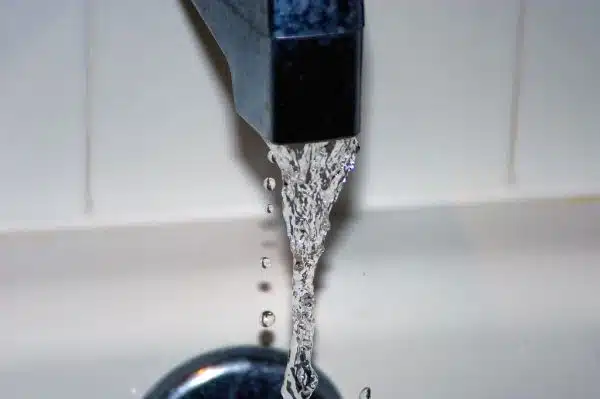

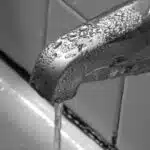

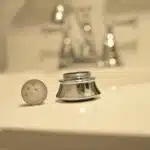


![How To Replace A Bathtub Drain In A Mobile Home 8 2/365 [Bathtub Drain]](https://green-life.blog/wp-content/uploads/2023/05/3ft8KAJsNnjq-150x150.jpg.webp)






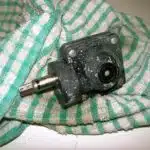

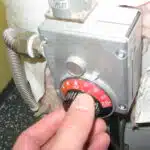
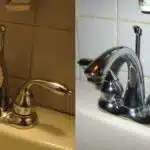
![How To Get Hair Out Of A Bathtub Drain 19 2/365 [Bathtub Drain]](https://green-life.blog/wp-content/uploads/2023/05/cOEu5edpkejq-150x150.jpg.webp)

